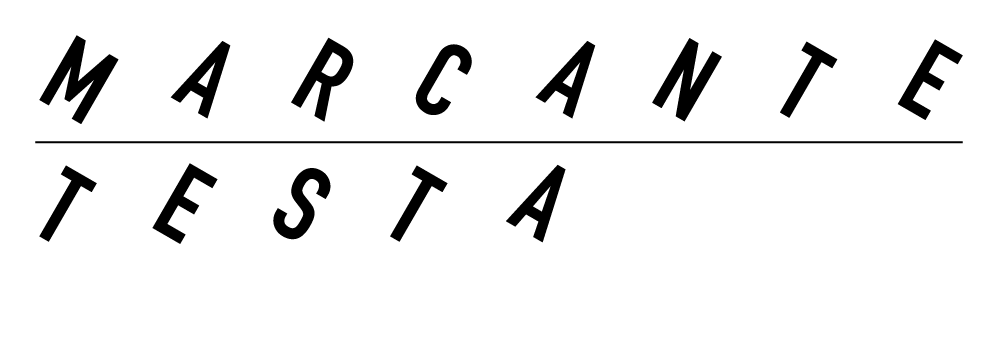An amazing interview by Inês Graça on Attitude’s “POP” issue (July-August 2022)
“Uma nova era de Interiores · Vamos divertir-nos”
“A new era of Interiors · Let’s have fun”
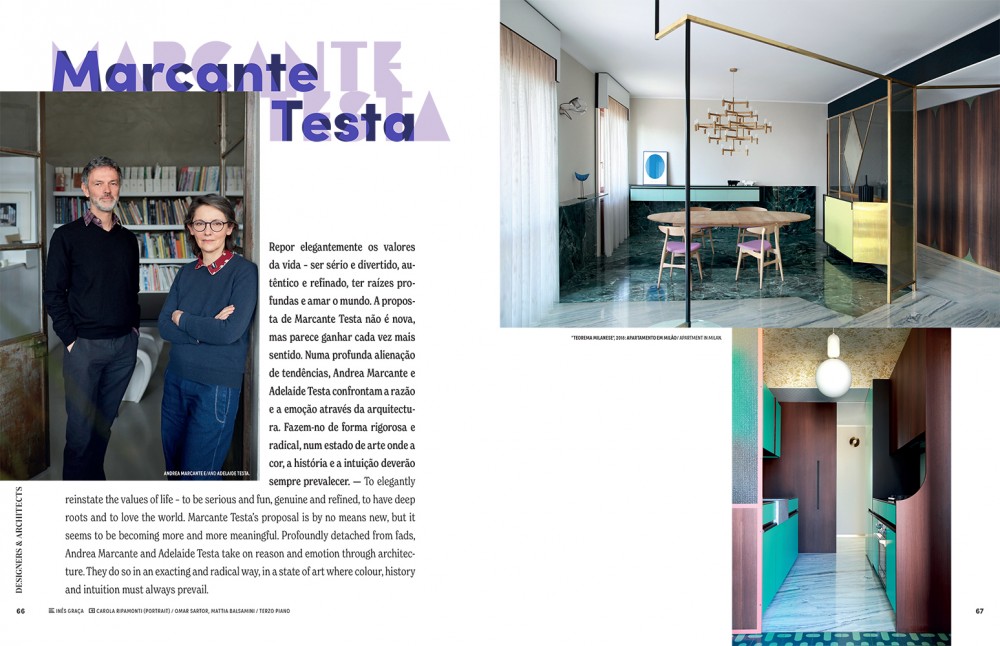
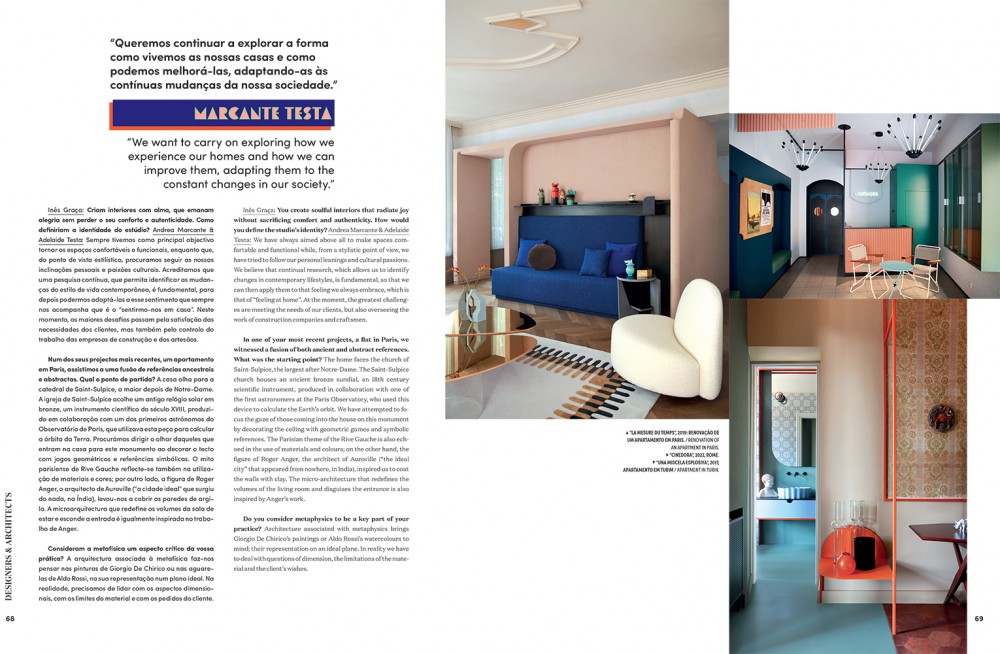
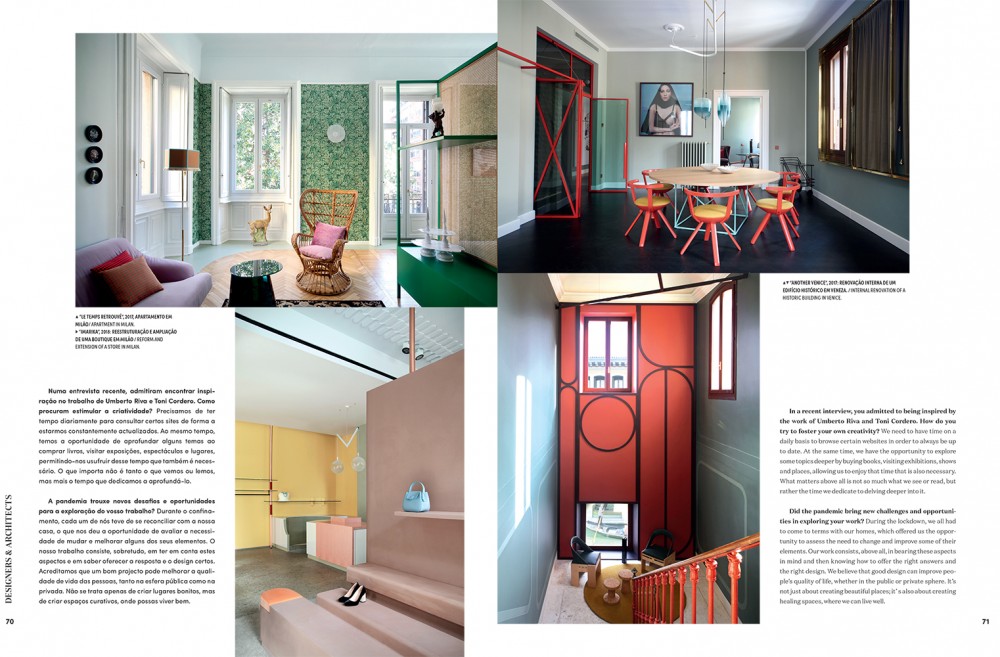
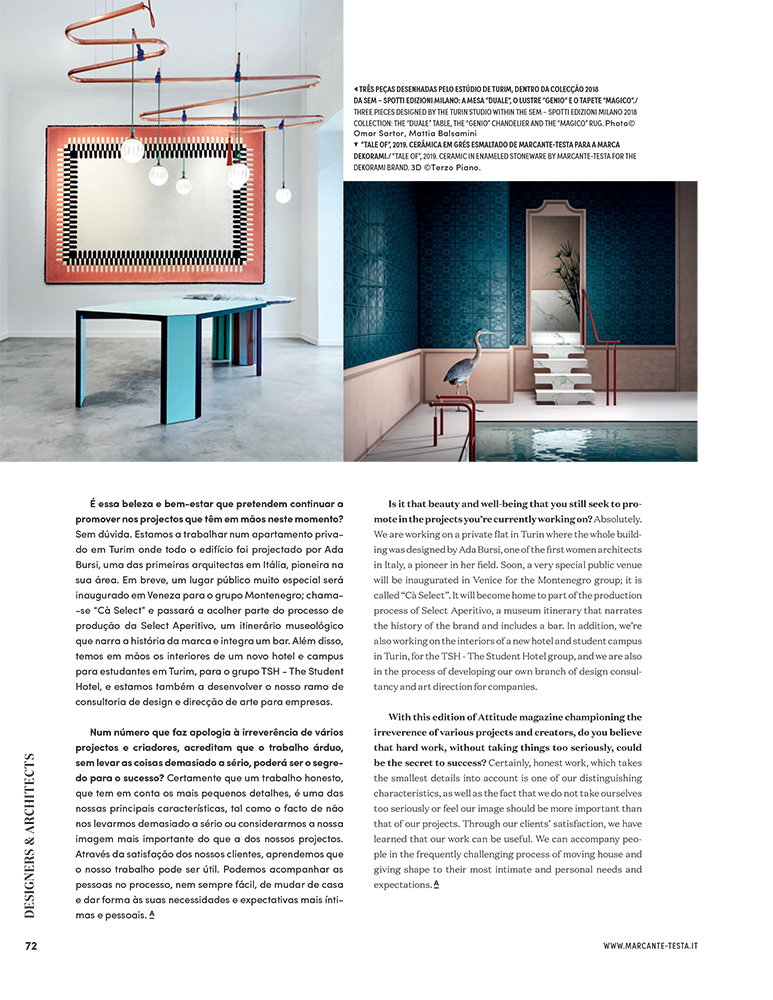
—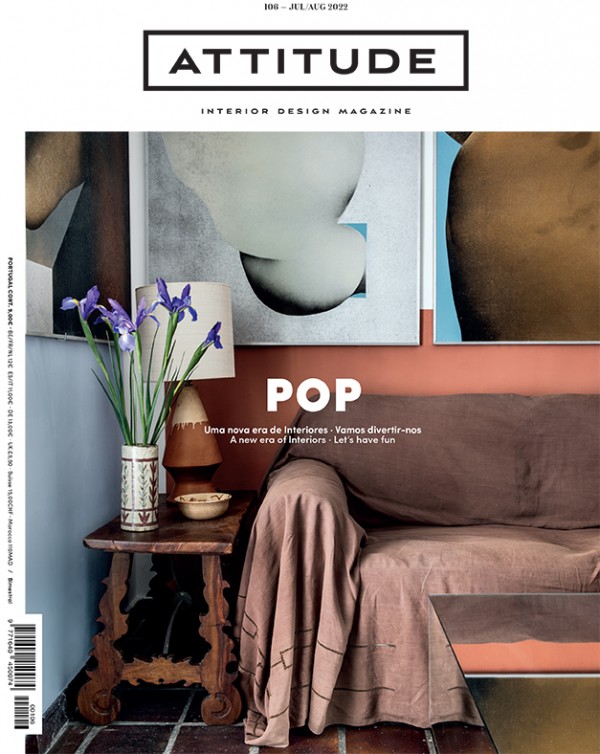 To elegantly reinstate the values of life – to be serious and fun, genuine and refined, to have deep roots and to love the world. Marcante Testa’s proposal is by no means new, but it seems to be becoming more and more meaningful. Profoundly detached from fads, Andrea Marcante and Adelaide Testa take on reason and emotion through architecture. They do so in an exacting and radical way, in a state of art where colour, history and intuition must always prevail.
To elegantly reinstate the values of life – to be serious and fun, genuine and refined, to have deep roots and to love the world. Marcante Testa’s proposal is by no means new, but it seems to be becoming more and more meaningful. Profoundly detached from fads, Andrea Marcante and Adelaide Testa take on reason and emotion through architecture. They do so in an exacting and radical way, in a state of art where colour, history and intuition must always prevail.
Inês Graça: You create soulful interiors that radiate joy without sacrificing comfort and authenticity. How would you define the studio’s identity?
Andrea Marcante & Adelaide Testa: We have always aimed above all to make spaces comfortable and functional while, from a stylistic point of view, we have tried to follow our personal leanings and cultural passions. We believe that continual research, which allows us to identify changes in contemporary lifestyles, is fundamental, so that we can then apply them to that feeling we always embrace, which is that of “feeling at home”. At the moment, the greatest challenges are meeting the needs of our clients, but also overseeing the work of construction companies and craftsmen.
In one of your most recent projects, a flat in Paris, we witnessed a fusion of both ancient and abstract references. What was the starting point? The home faces the church of Saint-Sulpice, the largest after Notre-Dame. The Saint-Sulpice church houses an ancient bronze sundial, an 18th century scientific instrument, produced in collaboration with one of the first astronomers at the Paris Observatory, who used this device to calculate the Earth’s orbit. We have attempted to focus the gaze of those coming into the house on this monument by decorating the ceiling with geometric games and symbolic references. The Parisian theme of the Rive Gauche is also echoed in the use of materials and colours; on the other hand, the figure of Roger Anger, the architect of Auroville (“the ideal city” that appeared from nowhere, in India), inspired us to coat the walls with clay. The micro-architecture that redefines the volumes of the living room and disguises the entrance is also inspired by Anger’s work.
Do you consider metaphysics to be a key part of your practice? Architecture associated with metaphysics brings Giorgio De Chirico’s paintings or Aldo Rossi’s watercolours to mind; their representation on an ideal plane. In reality we have to deal with questions of dimension, the limitations of the material and the client’s wishes.
In a recent interview, you admitted to being inspired by the work of Umberto Riva and Toni Cordero. How do you try to foster your own creativity? We need to have time on a daily basis to browse certain websites in order to always be up to date. At the same time, we have the opportunity to explore some topics deeper by buying books, visiting exhibitions, shows and places, allowing us to enjoy that time that is also necessary. What matters above all is not so much what we see or read, but rather the time we dedicate to delving deeper into it.
Did the pandemic bring new challenges and opportunities in exploring your work? During the lockdown, we all had to come to terms with our homes, which offered us the opportunity to assess the need to change and improve some of their elements. Our work consists, above all, in bearing these aspects in mind and then knowing how to offer the right answers and the right design. We believe that good design can improve people’s quality of life, whether in the public or private sphere. It’s not just about creating beautiful places; it’ s also about creating healing spaces, where we can live well.
Is it that beauty and well-being that you still seek to promote in the projects you’re currently working on? Absolutely. We are working on a private flat in Turin where the whole building was designed by Ada Bursi, one of the first women architects in Italy, a pioneer in her field. Soon, a very special public venue will be inaugurated in Venice for the Montenegro group; it is called “Cà Select”. It will become home to part of the production process of Select Aperitivo, a museum itinerary that narrates the history of the brand and includes a bar. In addition, we’re also working on the interiors of a new hotel and student campus in Turin, for the TSH – The Student Hotel group, and we are also in the process of developing our own branch of design consultancy and art direction for companies.
With this edition of Attitude magazine championing the irreverence of various projects and creators, do you believe that hard work, without taking things too seriously, could be the secret to success? Certainly, honest work, which takes the smallest details into account is one of our distinguishing characteristics, as well as the fact that we do not take ourselves too seriously or feel our image should be more important than that of our projects. Through our clients’ satisfaction, we have learned that our work can be useful. We can accompany people in the frequently challenging process of moving house and giving shape to their most intimate and personal needs and expectations.
——
Repor elegantemente os valores da vida – ser sério e divertido, autêntico e refinado, ter raízes profundas e amar o mundo. A proposta de Marcante Testa não é nova, mas parece ganhar cada vez mais sentido. Numa profunda alienação de tendências, Andrea Marcante e Adelaide Testa confrontam a razão e a emoção através da arquitectura. Fazem-no de forma rigorosa e radical, num estado de arte onde a cor, a história e a intuição deverão sempre prevalecer.
Inês Graça: Criam interiores com alma, que emanam alegria sem perder o seu conforto e autenticidade. Como definiriam a identidade do estúdio?
Andrea Marcante & Adelaide Testa: Sempre tivemos como principal objectivo tornar os espaços confortáveis e funcionais, enquanto que, do ponto de vista estilístico, procuramos seguir as nossas inclinações pessoais e paixões culturais. Acreditamos que uma pesquisa contínua, que permita identificar as mudanças do estilo de vida contemporâneo, é fundamental, para depois podermos adaptá-las a esse sentimento que sempre nos acompanha que é o “sentirmo-nos em casa”. Neste momento, os maiores desafios passam pela satisfação das necessidades dos clientes, mas também pelo controlo do trabalho das empresas de construção e dos artesãos.
Num dos seus projectos mais recentes, um apartamento em Paris, assistimos a uma fusão de referências ancestrais e abstractas. Qual o ponto de partida? A casa olha para a catedral de Saint-Sulpice, a maior depois de Notre-Dame. A igreja de Saint-Sulpice acolhe um antigo relógio solar em bronze, um instrumento científico do século XVIII, produzido em colaboração com um dos primeiros astrónomos do Observatório de Paris, que utilizava esta peça para calcular a órbita da Terra. Procurámos dirigir o olhar daqueles que entram na casa para este monumento ao decorar o tecto com jogos geométricos e referências simbólicas. O mito parisiense de Rive Gauche reflecte-se também na utilização de materiais e cores; por outro lado, a figura de Roger Anger, o arquitecto de Auroville (“a cidade ideal” que surgiu do nada, na Índia), levou-nos a cobrir as paredes de argila. A microarquitectura que redefine os volumes da sala de estar e esconde a entrada é igualmente inspirada no trabalho de Anger.
Consideram a metafísica um aspecto crítico da vossa prática? A arquitectura associada à metafísica faz-nos pensar nas pinturas de Giorgio De Chirico ou nas aguarelas de Aldo Rossi, na sua representação num plano ideal. Na realidade, precisamos de lidar com os aspectos dimensionais, com os limites do material e com os pedidos do cliente.
Numa entrevista recente, admitiram encontrar inspiração no trabalho de Umberto Riva e Toni Cordero. Como procuram estimular a criatividade? Precisamos de ter tempo diariamente para consultar certos sites de forma a estarmos constantemente actualizados. Ao mesmo tempo, temos a oportunidade de aprofundar alguns temas ao comprar livros, visitar exposições, espectáculos e lugares, permitindo-nos usufruir desse tempo que também é necessário. O que importa não é tanto o que vemos ou lemos, mas mais o tempo que dedicamos a aprofundá-lo.
A pandemia trouxe novos desafios e oportunidades para a exploração do vosso trabalho? Durante o confinamento, cada um de nós teve de se reconciliar com a nossa casa, o que nos deu a oportunidade de avaliar a necessidade de mudar e melhorar alguns dos seus elementos. O nosso trabalho consiste, sobretudo, em ter em conta estes aspectos e em saber oferecer a resposta e o design certos. Acreditamos que um bom projecto pode melhorar a qualidade de vida das pessoas, tanto na esfera pública como na privada. Não se trata apenas de criar lugares bonitos, mas de criar espaços curativos, onde possas viver bem.
É essa beleza e bem-estar que pretendem continuar a promover nos projectos que têm em mãos neste momento? Sem dúvida. Estamos a trabalhar num apartamento privado em Turim onde todo o edifício foi projectado por Ada Bursi, uma das primeiras arquitectas em Itália, pioneira na sua área. Em breve, um lugar público muito especial será inaugurado em Veneza para o grupo Montenegro; chama-se “Cà Select” e passará a acolher parte do processo de produção da Select Aperitivo, um itinerário museológico que narra a história da marca e integra um bar. Além disso, temos em mãos os interiores de um novo hotel e campus para estudantes em Turim, para o grupo TSH – The Student Hotel, e estamos também a desenvolver o nosso ramo de consultoria de design e direcção de arte para empresas.
Num número que faz apologia à irreverência de vários projectos e criadores, acreditam que o trabalho árduo, sem levar as coisas demasiado a sério, poderá ser o segredo para o sucesso? Certamente que um trabalho honesto, que tem em conta os mais pequenos detalhes, é uma das nossas principais características, tal como o facto de não nos levarmos demasiado a sério ou considerarmos a nossa imagem mais importante do que a dos nossos projectos. Através da satisfação dos nossos clientes, aprendemos que o nosso trabalho pode ser útil. Podemos acompanhar as pessoas no processo, nem sempre fácil, de mudar de casa e dar forma às suas necessidades e expectativas mais íntimas e pessoais.
